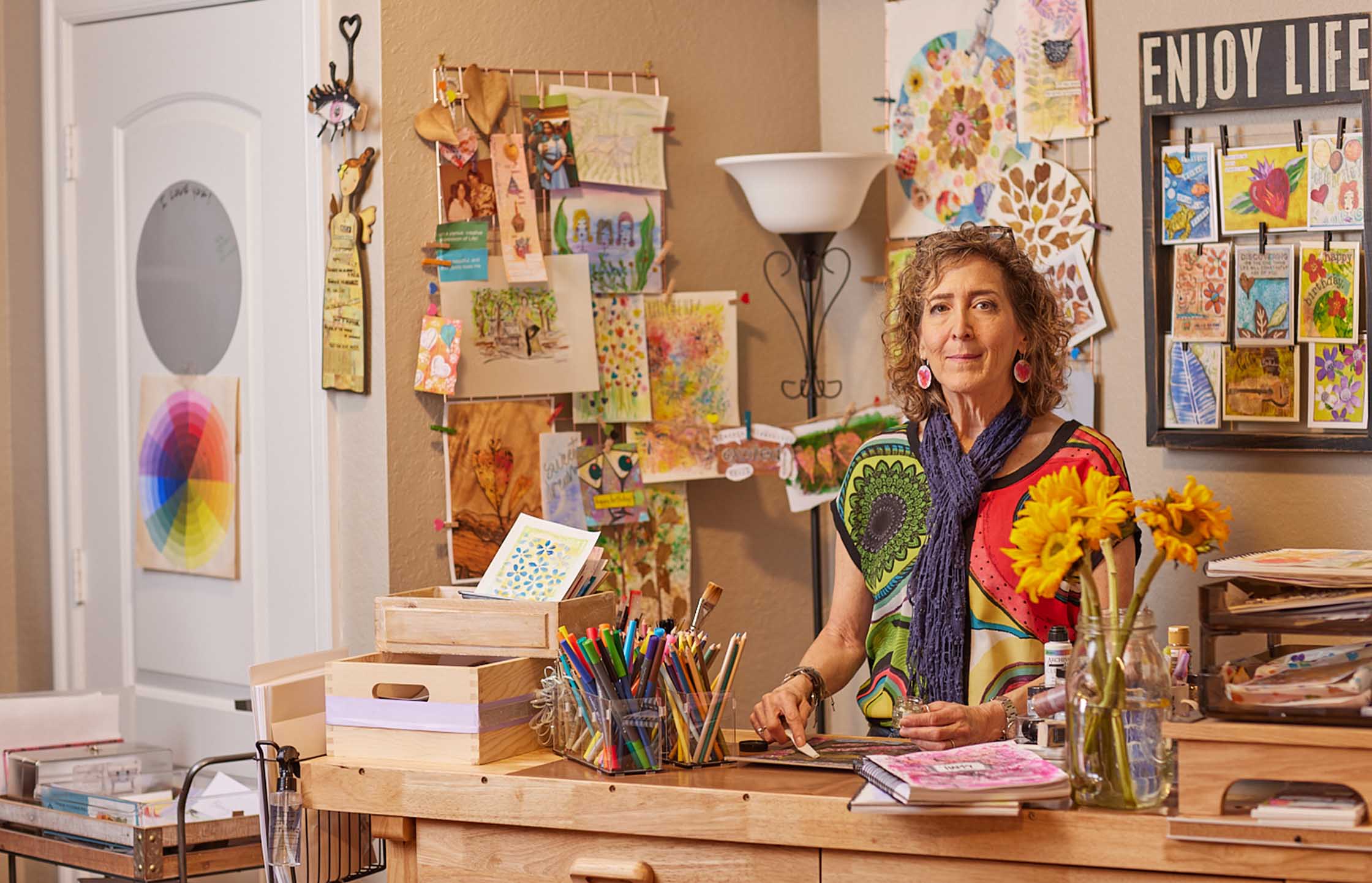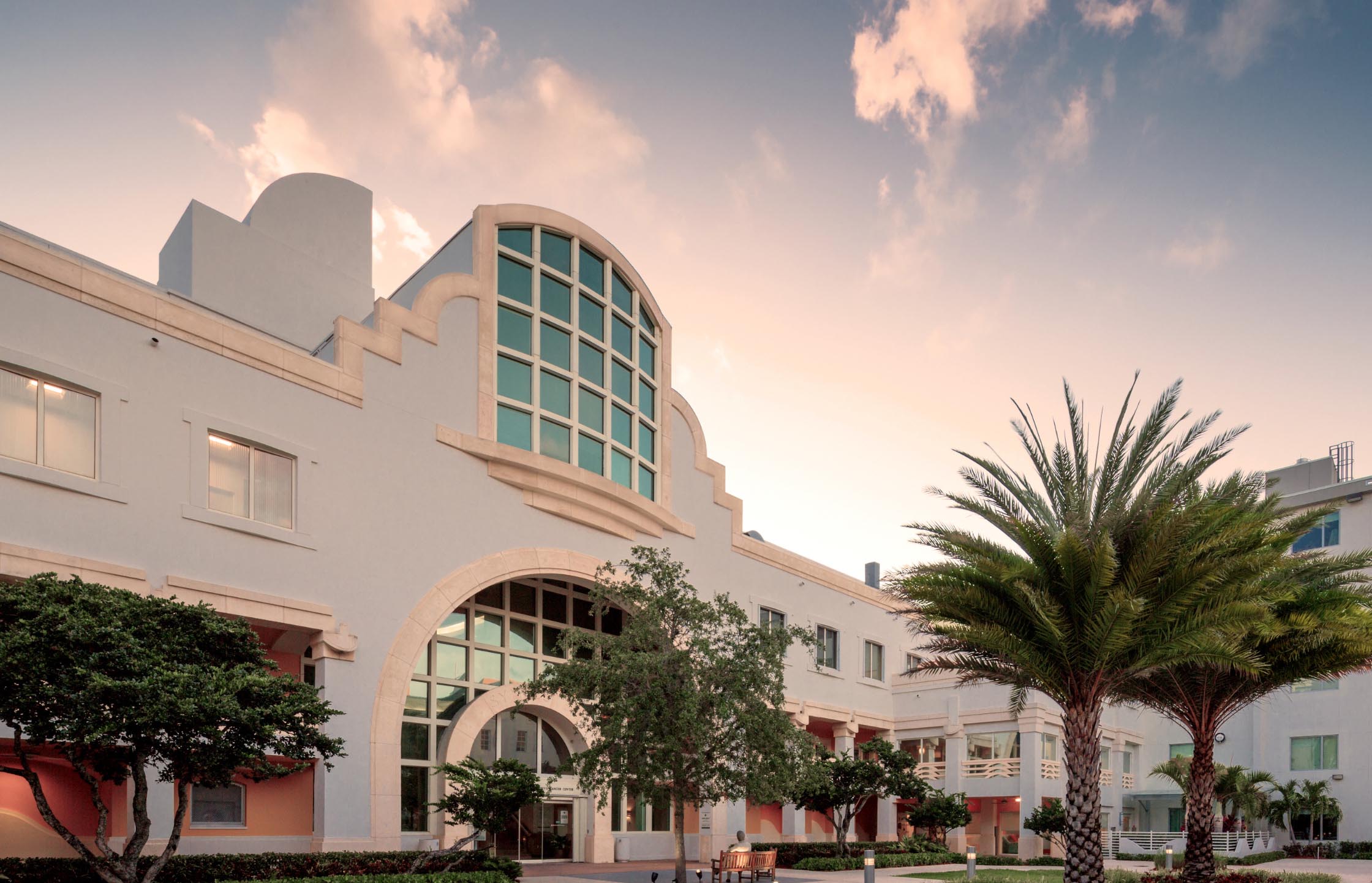Survivors in the Spotlight
Sylvester’s post-treatment programs provide the support patients need to achieve the best possible outcomes
By Ana Veciana-Suarez
Photography by Jeffery Salter

Randy Shattenkirk, a cancer survivor, started using art as a form of therapy after finishing treatment.
B
reakthrough scientific research and early screenings mean that more Americans than ever are surviving cancer, but medical treatment is only one part of the journey. Oncology providers now understand that for therapies to achieve the best possible outcomes, they should embrace all facets of a patient’s life.
“We’ve known that patients were getting a lot of attention at diagnosis and during treatment, and rightfully so,” said Frank J. Penedo, Ph.D., director of Cancer Survivorship and Supportive Care at Sylvester Comprehensive Cancer Center. “But they weren’t getting the support they needed after treatment.”
Support for the fatigue that robs them of energy. Support for the fear that cancer would return or spread. Support for the many challenges that affect their emotional well-being.
“There is also a growing body of literature showing that attending to these needs after treatment made a significant difference in patient outcomes,” said Dr. Penedo, who also holds the inaugural Sylvester Dolphins Challenge Cancer Living Proof Endowed Chair in Cancer Survivorship.
To address these concerns, Sylvester launched the Cancer Survivorship and Translational Behavioral Sciences Initiative, a multidisciplinary approach that zeroes in on the long-term effects — physical, emotional, and social — of cancer treatment. In other words, the program goes beyond the initial diagnosis and primary treatment with individualized support plans that guide patients through follow-up care and health-promoting guidelines. The program also points people to a variety of supportive care services, from acupuncture to exercise physiology, from social work to fertility preservation, from art classes to psychological support and palliative care.
The survivorship program ensures that patients are assessed for the unique and ongoing challenges they face once they complete primary treatment. Some patients attend oncology massage sessions or music classes while undergoing adjuvant treatment, such as endocrine therapy. Others may need psychosocial support or financial counseling. At Sylvester, the only National Cancer Institute-designated cancer center in South Florida, the survivorship support model is embedded within the clinical care of the patients, so that they are assessed at diagnosis and directed to the right resources throughout their treatment.
“We make sure that survivorship care is fully aligned with the patients’ experience and their oncology team when they come in for their cancer care,” Dr. Penedo said. “We feel this is extremely important” as part of a continuum of care.
The first survivorship care meeting involves a team that develops a plan tailored to the patient’s needs. It includes a summary of the care already received, and guidelines and recommendations focusing on both the physical and emotional issues often faced by survivors. There are referrals to support groups, workshops, and seminars, links to child care and financial services, and a listing of available in-house resources and therapies, such as nutrition and art. All suggestions are evidence based and shared with the patient’s providers, including their primary care physician.
The team “doesn’t make recommendations because they look good or sound good,” Dr. Penedo added. “They are based on the best and most currently available scientific research.”
He likens the delivery of these plans to a precision care survivorship hub, with spokes pointing to the services that best suit the individual survivor’s situation. Patients are encouraged to share this plan with health care providers outside their cancer group.
About a third of all cancer patients access supportive care services resources. Some use several offerings. “They develop a strong professional relationship with their therapist or coach,” Dr. Penedo said. “We consider it a partnership for the duration of their survivorship journey.”
The initiative has evolved over the years, with technology playing a bigger role. For example, the My Wellness Check platform, developed by Dr. Penedo and his team, is a patient-reported outcomes tool delivered via the patient portal. Participation in this program has been associated with less likelihood of emergency room visits and hospitalizations.
A less-stressed patient who feels supported is more likely to participate in follow-up care and lead a healthy lifestyle. “Our goal,” Dr. Penedo said, “is to provide seamlessly integrated patient care.”
Read about four survivors who are living their best possible lives during and after cancer treatment.![]()



